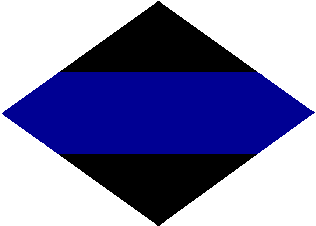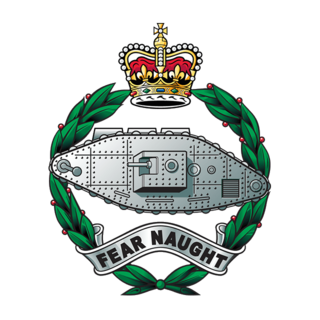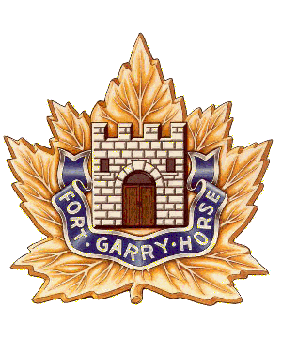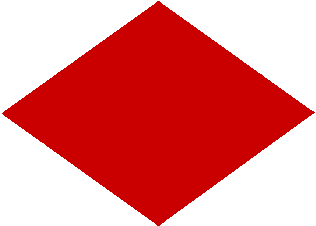
The 1st Commonwealth Division was the military unit that commanded Commonwealth land forces in the Korean War. The division was a part of the multinational British Commonwealth Forces Korea, with infantry units of the British Army, Canadian Army and Australian Army forming the bulk of the division. Additionally, the New Zealand Army supplied artillery contingents and an Indian medical unit was also attached. As with the "Korean Augmentation To the United States Army" (KATUSA) programme, numerous South Korean troops were seconded to the Commonwealth division to make up numbers under a scheme known as "KATCOM".

The 1st Airborne Division was an airborne infantry division of the British Army during the Second World War. The division was formed in late 1941 during the Second World War, after the British Prime Minister, Winston Churchill, demanded an airborne force, and was initially under command of Major-General Frederick A. M. "Boy" Browning. The division was one of two airborne divisions raised by the British Army during the war, with the other being the 6th Airborne Division, created in May 1943, using former units of the 1st Airborne Division.

The 2nd Canadian Armoured Brigade was an armoured brigade of the Canadian Army that saw active service during World War II. The brigade was composed of the 6th, 10th and 27th Canadian Armoured regiments and saw service in northwest Europe, landing in Normandy on D-Day and remaining in combat up to Victory in Europe Day.

The 1st Canadian Division is a joint operational command and control formation based at CFB Kingston, and falls under Canadian Joint Operations Command. It is a high-readiness unit, able to move on very short notice, and is staffed and equipped to meet Canada’s military objectives to counter any potential threat.

The 12e Régiment blindé du Canada is a Canadian Army armoured regiment based in CFB Valcartier, on the outskirts of Quebec City. The regiment has both a Regular Force and a Primary Reserve unit. The 12e Régiment blindé du Canada's abbreviation is 12e RBC.

The Royal Tank Regiment (RTR) is the oldest tank unit in the world, being formed by the British Army in 1916 during the First World War. Today, it is the armoured regiment of the British Army's 12th Armoured Infantry Brigade. Formerly known as the Tank Corps and the Royal Tank Corps, it is part of the Royal Armoured Corps.

The King's Own Calgary Regiment (RCAC), colloquially known as The King’s Own, is a Royal Canadian Armoured Corps cavalry regiment of the Canadian Armed Forces. Headquartered at Mewata Armoury in Calgary, Alberta, the King’s Own is a part-time Primary Reserve unit of 41 Canadian Brigade Group, 3rd Canadian Division. Its regimental museum is located at the Military Museums in southwest Calgary.

Poland raised the 2nd Polish Armoured Regiment in France on 29 January 1940 as the 2nd Tank Battalion and fought under this title in the French campaign of 1940. Members of the regiment reformed in Scotland on 13 November 1942 after the fall of France adopting the designation of 2nd Armoured Regiment. The reconstituted unit returned to France in late July 1944 as a part of the 10th Armoured Cavalry Brigade, 1st (Polish) Armoured Division.. Its most memorable action in Normandy being it first, one fought at Saint-Aignan on 8 August 1944; a battle which is still commemorated annually by the regiment.

The Fort Garry Horse is a Canadian Army Reserve armoured regiment based in Winnipeg, Manitoba, Canada. It is part of 3rd Canadian Division's 38 Canadian Brigade Group. It traces its history to a cavalry regiment first formed in 1912 that first took up the name "Fort Garry" a year afterwards. Since that time the regiment has served in the First World War, sending men to battalions of the Canadian Expeditionary Force, and as an armoured regiment in the Second World War.

The 1st Hussars is an armoured Primary Reserve regiment of the Canadian Armed Forces, based in London and Sarnia, Ontario.

The 79th Armoured Division was a specialist armoured division of the British Army created during the Second World War. The division was created as part of the preparations for the Normandy invasion on 6 June 1944, D-Day.

The Ontario Regiment (RCAC) is a Primary Reserve armoured reconnaissance regiment of the Canadian Army. The unit is based in downtown Oshawa, Ontario, and is named after Ontario County (1852–1973). Formed in 1866, and more commonly known as the 'Ontarios', 'black cats' or 'ONT R' (pronounced "ON-tar"), the regiment ranks among the oldest continuously serving Reserve (Militia) regiments in Canada and is one of the senior armoured regiments in the Royal Canadian Armoured Corps.

The 44th Royal Tank Regiment was an armoured regiment of the British Army, which was part of the Royal Tank Regiment, itself part of the Royal Armoured Corps that saw active service in World War II.

The 23rd Armoured Brigade, originally formed as the 23rd Army Tank Brigade, was an armoured brigade of the British Army that saw service during the Second World War. The brigade was a 2nd Line Territorial Army (TA) formation. It was reorganised and renamed the 23rd Armoured Brigade, when it was assigned to the 8th Armoured Division, although it never operated under command of the division.

The 3rd County of London Yeomanry (Sharpshooters) was a Yeomanry regiment of the British Army. It was raised in 1901 from Second Boer War veterans of the Imperial Yeomanry. During the First World War it served dismounted at Gallipoli, was remounted to serve in Macedonia, Egypt and Palestine, before being converted to machine gunners for service on the Western Front. 2nd and 3rd Line units remained in the United Kingdom throughout.

II Canadian Corps was a corps-level formation that, along with I (British) Corps and I Canadian Corps, comprised the First Canadian Army in Northwest Europe during World War II.

I Canadian Corps was one of the two corps fielded by the Canadian Army during the Second World War.

At the start of 1939, the British Army was, as it traditionally always had been, a small volunteer professional army. At the beginning of the Second World War on 1 September 1939, the British Army was small in comparison with those of its enemies, as it had been at the beginning of the First World War in 1914. It also quickly became evident that the initial structure and manpower of the British Army was woefully unprepared and ill-equipped for a war with multiple enemies on multiple fronts. During the early war years, mainly from 1940 to 1942, the British Army suffered defeat in almost every theatre of war in which it was deployed. But, from late 1942 onwards, starting with the Second Battle of El Alamein, the British Army's fortunes changed and it rarely suffered another defeat.

The First Canadian Army was a field army and a formation of the Canadian Army in World War II in which most Canadian elements serving in North-West Europe were assigned. It served on the Western Front from July 1944 until May 1945.

The 144th Regiment Royal Armoured Corps was an armoured regiment of the British Army. Originally raised during World War II as a battalion of the East Lancashire Regiment it was later transferred to the Royal Armoured Corps. It fought in the campaign in North-West Europe, from June 1944 to May 1945.





















